One of the best outings we’ve taken on our journey was an official tour of the D-Day beaches in Normandy, France. I can honestly say that I had a deeper sense of pride and gratitude for the sacrifices made by our military, perhaps more than ever in my life.
We spent some time in the morning at Omaha Beach. We are in the process of reading an in-depth book about the history of D-Day, but are still early in the story, so we learned a lot of details about the invasion that we didn’t know before. For example, we hadn’t realized that because of the weather earlier that morning, the bombers and the ships who were aiming to break down the German defense missed their onshore targets. So the American troops who landed on Omaha were facing an entirely intact German defense. That is largely why the loss of life was so tragically high.
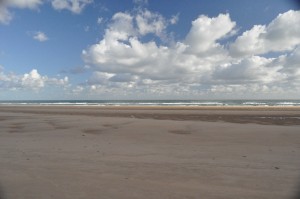
It was sobering to stand here on Omaha Beach and imagine what it must have been like on June 6, 1944.
After visiting the beach, we made our way to the American cemetery and memorial nearby. As we approached the grassy field full of white-marble crosses, my eyes filled with tears as I tried to grasp the enormity of the sacrifice these men had made… for our freedom.
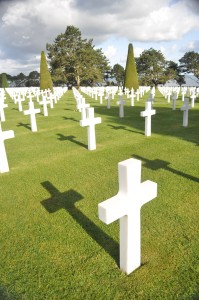
The crosses seemed to go on forever. There are more than 9,000 soldiers buried here, not all who died on D-Day, but who fought for the liberation of Europe in WWII.
One of the ladies on our tour actually had an uncle who had died on D-Day. When you have a next of kin buried here, the workers will look up the name, print out all this information about his division, and then drive you out to the grave in a golf cart. They give you a French flag and an American flag to put on the grave.
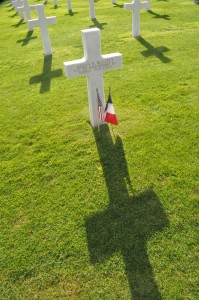
It was really well-done… they even use sand from Omaha Beach to fill in the engraved name so that it stands out better for a photo.
After Omaha Beach we visited Pointe du Hoc. This particular area of the coast is all cliffs and no beach, so the division that landed here actually scaled the cliffs to make their attack. Despite some of the hiccups in the original plan, this part of the invasion was actually relatively successful.
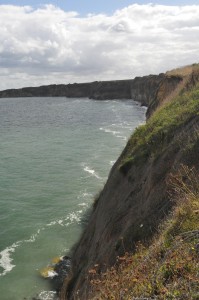
No small feat, getting over these cliffs! The German defense in this area was basically facing inland, because no one expected an attack from the cliffs.
In the afternoon we went to St. Mere Eglise and Utah Beach. St. Mere Eglise was the first town in France to be liberated on June 6, 1944. It is well-known for the paratrooper who got stranded on the church steeple in town. Even today, they have a dummy with a parachute up on the church!
We spent the rest of the afternoon at Utah Beach, which was another part of the invasion which was relatively successful. From there we visited other areas where we learned more about the paratroopers’ divisions and their roles in the invasion. Altogether it was a great tour (we went with OverLord Tours, just in case you ever go and are looking for a good company!). We learned so much and altogether had a deeper sense of appreciation for the men who gave their lives during WWII.
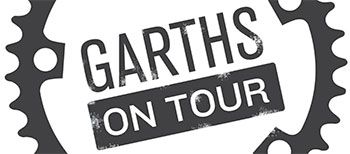
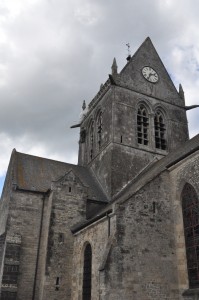
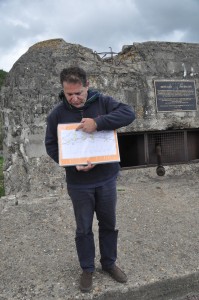
2 comments
Wendy Gay says:
Nov 27, 2012
Hello from Abbeville! I was just reading about your trip to Normandy and it brings back so many memories. My husband and I were there a couple of years ago. Walter’s grandfather is buried in the American cemetery there and we were the first to visit his grave. Very emotional! So glad that you were able to visit this part of the country!
Wendy
Kevin Beasley says:
Dec 7, 2012
Wow! Definitely on my bucket list! Can’t imagine what it must be like to be there. Which book are you reading? I adore Steven Ambrose’s book!